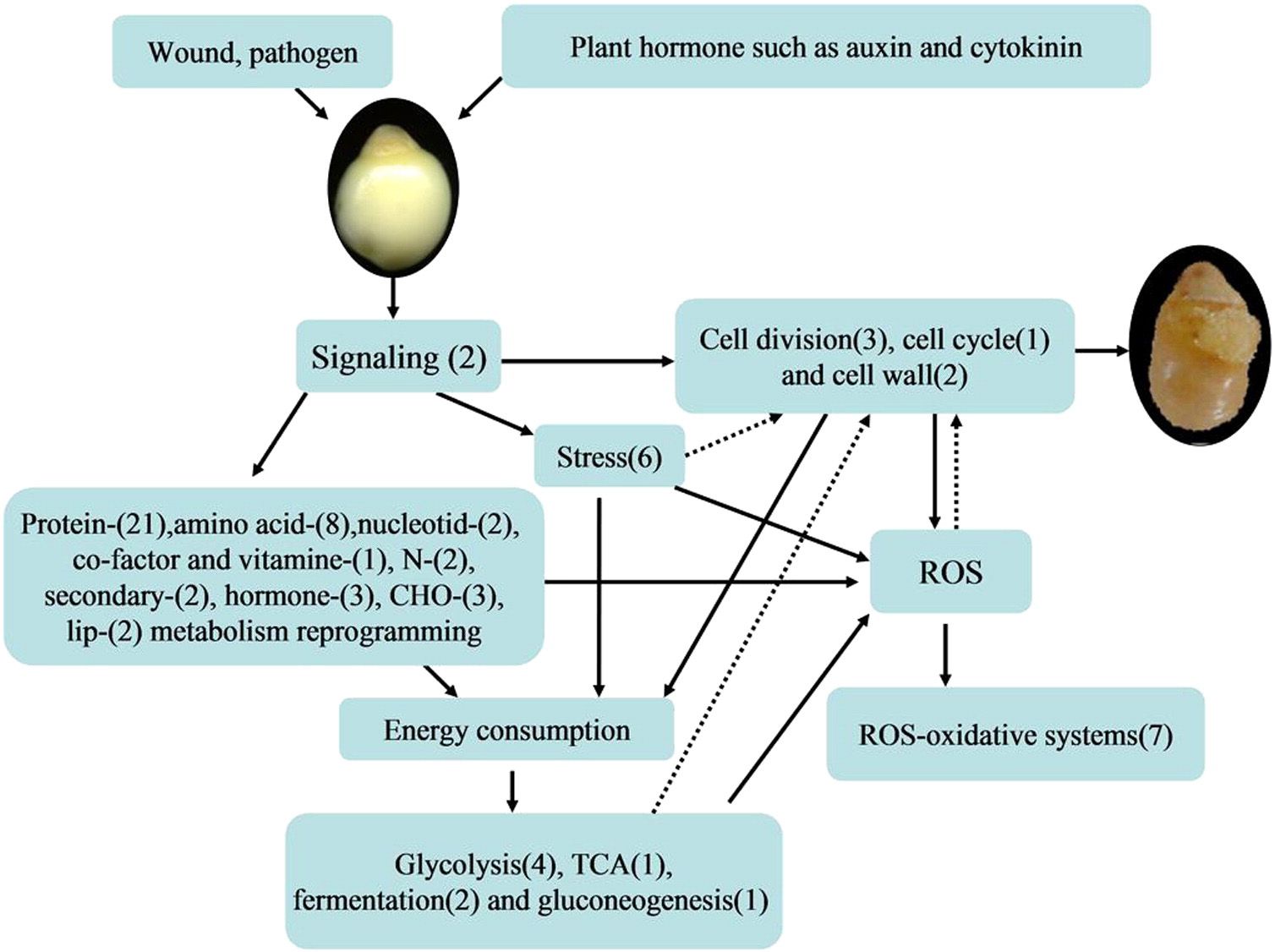Name:YANG Pingfang
Tell:
Email:yangpf@wbgcas.cn
Organization:Wuhan Botanical Garden
Embryogenic Callus Induction Promotes Lotus Regeneration via Callus Phase
2015-11-16
Lotus is a perennial aquatic plant, widely cultivated as a food crop for its seeds and rhizomes. In the documentary “A Bite of China”, a famous dish made of lotus named “Lotus root and rib soup” has been mentioned. When we enjoy the delicious food, the scientists are trying to overcome the obstacles in lotus reproduction.
Lotus can be propagated by both sexual (seeds) and asexual (rhizomes) methods. In vivo, tissue culture acting as a good alternative method may overcome the obstacles in rhizome reproduction mode. However, regeneration via callus phase is still a long unsolved question due to difficult embryogenic callus induction. It is a good strategy to further decipher the molecular processes of cellular dedifferentiation and callus formation using proteomic methods in lotus.
Dr. LIU Yanli, supervised by Prof. YANG Pingfang from Wuhan Botanical Garden, presented a comparative proteomics work in cotyledons before and tissues from 10 to 20 days after induction. A total of 91 proteins were detected as differentially regulated, and sorted into 6 functional groups.
Proteins function analysis showed that plant cells underwent metabolism reprogramming during callus induction. Changes of cell wall-related proteins suggested that these proteins played important roles in rapid cell division and proliferation.
Based on these data, model for molecular mechanisms guiding metabolism progresses of cellular dedifferentiation and callus formation in lotus cotyledons was proposed. These findings contribute to further deciphering of molecular mechanisms that lead to callus formation of lotus and other plants as well.
Results entitle “Induction and quantitative proteomic analysis of cell dedifferentiation during callusformation of lotus (NelumbonuciferaGaertn.spp.baijianlian)” were published on Journal of Proteomic. This project was supported by The Knowledge Innovation Project.

A work model for callus formation in lotus cotyledons (Image plotted by LIU Yanli)